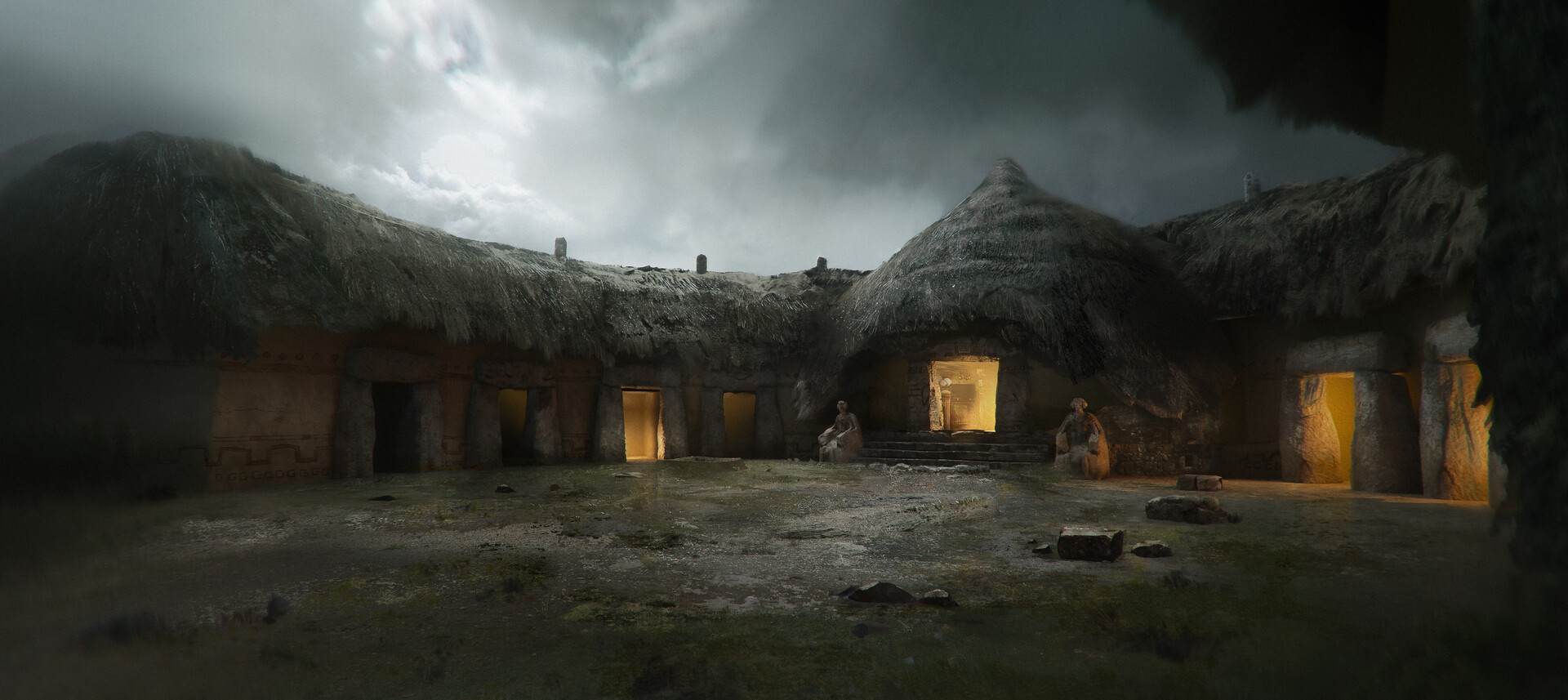Kamachina (ka-ma-chi-na)
by hughpierre
Government
Zipa
The zipa is the ruler of the southern part of the Kamachina Savanna and adjacent areas. He is one of the rulers of the Desert Confederation and the recognized leader of the Third Quadrant by the Sapa. As the leader, the zipa acts as the spiritual and social example for others to follow so that the confederation would remain unified against outside threats.Defences
Booby Traps
Lethal booby traps are aligned along the Qhapaq Ñan approach in order to slow invaders while guecha warriors gather.Industry & Trade
Honey Hunting
Only those of us who are strong, brave and fit should go up thereHoney hunters descend towering cliffs on man made ladders to harvest enchanted honey nestled under jagged overhangings. It is dangerous work, but obtaining honey is so central to the people in the third quadrant and it is impossible to separate their association. Going through these labours to achieve rich rewards became the basis for their work ethic.
Gold Working
Gold is not common in Kamachina territories but enough is obtained through trade to make crowns, nose rings, pectorals, earrings, diadems, chunso, brooches, scepters, coins and tools. They use an advanced technique to produced highly stylilised figures utilizing melting pots, ovens and heated stone moulds filled with beeswax.Salt Shifting
Water collected from salt springs are boiled in the sun, or over coals, to be as the most common de facto money in trading with the confederacy's neighbours.Emerald Mining
People dig holes next to emerald-containing sediment rocks during the rainy seasons. The rainwater would wash into the dried holes to reveal clean emeralds.Districts
Kamachina Rule
Lesser Kang ruins litter the district, all of which have been repurposed to temples of the Sun, Moon and Rainbows. The Rule District is also interspersed with several neighbourhoods built in a circular style surrounding a minor chief's house.Outlying districts are named for a geographical feature on the border that acts as the primary demarcation line.
End of the Desert
A region dotted with salt springs where much of Kamachina's wealth is made.End of Mukuku
A mining region that extracts copper and emeralds for trade as raw materials or finished products.End of the Lake
An agriculture region that farms potatoes, maize and peas. Weekend craft markets open for tourists to sell wares, cloth and jewelry.End of the Reeds
A jungled region bordering part of snake lake that is somewhat deserted for its history or marching armies seeking to enter the Valley of Palaces.End of the Forest
A industrial region focused on harvesting the trees from the Neverending Forest.End of the River
A district noted as a local trade hub due to the Kamachina River bisecting it.Assets
Honey Treatments
People of the third quadrant regularly trade honey to Gaioor, Cloud Country and Soonous in far off lands. As a result, they bare greater treat than any other of contracting foreign diseases. Fortunately, they harvest honey in excess. Honey is the most effective, and often only, cure for a number of ills. It is prized as a thing worthy of worship. Recipes for salves and other treatments use the rare but nearby honey varients as bases for dealing with ulcers, jaundices, vomitings and stresses.Points of interest
Innoit Construction
Mara Fort
An high standard outpost built during the Tawantinsuyu conquest to secure and symbolize the innoit presence to the land's natives.Tamalame Fort
An high standard outpost built during the Tawantinsuyu conquest to secure and symbolize the innoit presence to the land's natives.Cundinamarca Fort
An high standard outpost built during the Tawantinsuyu conquest to secure and symbolize the innoit presence to the land's natives.Tourism
A structure built along the dirt paths for administrative and military purposes of the Third Quadrant. Tampu Wasi are specific to the honey-obsessed people in this quadrant. It functions to:
Contain supplies delivered by Ca-Chisneu
Serve as lodging for itinerant state personnel
Keep depositories of quipu records
Isolate and tend to the sick
Architecture
Monumental Architecture
There are old Kang ruins at the center of the Savanna that attracted many primitive people, who saw it as a site protected by the god of rainbows. These monumental foundations of ancient structures are remarkably well preserved sculpted rock with a beautiful glassy exterior dated back to the time of Mit'awi Chapaq. The end result was a mosaic façade of dark colours that glitter off Kang ruins throughout Tahuantinsuyo.Extreme heat permeated much of the world for a time before a terrible cold took over.
Bohíos
Common houses are built with clay, canes and wood in a conical form; organised around a central market square with the chief's house at the center. They have small doors and windows with little furniture, as they would typically sit on the floor. The flatlands of the Kamachina Savanna are dotted with several small settlements consisting of 10 to 100 bohíos that merge together over timeGeography
Savanna
A high grassy plateau in the western ranges of Hananhallpa. It is crossed from northeast to southwest by the Kamachina River, which at the southwestern edge of the plateau forms the Falls; in addition to the other tributaries form smaller valleys with very fertile soils dedicated to agriculture and animal-breeding.Natural Resources
Glass: Lemon coloured glass found scattered over the desert and can be fashioned into necklaces.
Minerals: Deposits of salt, emeralds and copper can be found in many nearby areas.
Animals: Alpaca, bihorn, foxes, lizards and squirrels.
Alternative Name(s)
City of Honey
Type
City
Population
50,000
Related Ethnicities
Inhabitant Demonym
Location under
Ruling/Owning Rank
Owning Organization
Related Tradition (Primary)
Related Traditions
Related Professions




I can tell you put alot of thought into this!
A well earned LIKE!